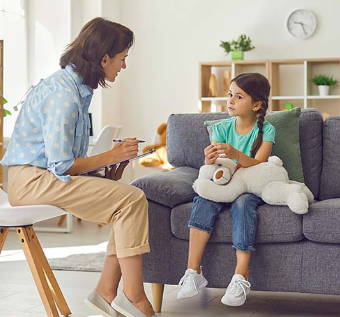Wellness is not just a personal journey; it is also something that children learn by observing the choices their parents make every day. From the way a parent prepares meals to how they handle stress, children often mirror what they see. When parents consistently model healthy decisions, they provide their children with practical examples of how to live with balance and energy. These choices may seem small in the moment, yet they accumulate into powerful lessons that shape a child’s lifelong habits.
One of the most noticeable ways parents demonstrate wellness is through the way they approach food. The family table often becomes the center of teaching about nourishment and balance. Parents who include colorful vegetables, fruits, whole grains, and proteins on their plates send a clear message that meals are more than just fuel; they are an opportunity to enjoy and respect the body. Choosing water over sugary drinks, savoring a variety of foods, and taking time to eat together all show children that mealtime can be both healthy and joyful. A parent who demonstrates moderation rather than strict restriction helps children understand that balance, not perfection, is the goal.
Movement is another everyday area where parents can guide by example. Children are more likely to be active when they see their parents making activity a natural part of daily life. This might mean walking to the park, stretching before bedtime, or playing an outdoor game as a family. A parent who parks a little farther from the store entrance or chooses to take the stairs is quietly modeling that movement does not always require a gym or special equipment. By treating physical activity as a fun and regular part of living, parents show that exercise can be enjoyable rather than a chore.
Equally important is the way parents handle rest and sleep. Children notice bedtime routines, and they often adopt similar practices as they grow older. Parents who make time for consistent sleep schedules, reduce screen time in the evening, and create a calm bedtime atmosphere show that rest is valuable. A parent who sets aside time to unwind, read, or reflect before bed demonstrates that good sleep habits contribute to overall wellness. These quiet signals communicate to children that health is not just about being busy but also about restoring energy.
Another subtle but powerful influence comes from how parents manage emotions and stress. Life is filled with challenges, and children are quick to observe how adults respond. Parents who approach difficulties with calmness, problem-solving, and self-care demonstrate resilience. Choosing to take a deep breath, practice gratitude, or talk openly about feelings helps children learn that emotional wellness matters. By showing that it is okay to pause, ask for help, or seek moments of calm, parents equip children with valuable tools for handling their own emotions in the future.
Wellness also shows up in the choices parents make about time. A parent who creates space for family activities, conversation, and connection demonstrates that relationships are part of a healthy life. When parents balance work, responsibilities, and family presence, they show that wellness includes making time for what matters most. Whether it is cooking together, sharing a story, or enjoying a walk, these everyday choices strengthen bonds and highlight that wellness thrives in community, not isolation.
Technology use is another area where parents model wellness daily. Children watch how often parents reach for their phones, how they balance screen time, and how they engage in face-to-face communication. A parent who sets boundaries, puts away devices during meals, or chooses an outdoor activity over an extra hour of screen time sends the message that technology can be a tool rather than a distraction. By demonstrating mindful use, parents help children understand the importance of balance between digital and real-world experiences.
Financial wellness, though often overlooked, is another aspect of everyday modeling. Children notice how parents approach spending, saving, and giving. Simple choices, such as creating a shopping list, avoiding unnecessary purchases, or discussing the value of money, all serve as lessons. When parents demonstrate gratitude for what they have and make thoughtful financial decisions, they teach children that wellness includes responsible and balanced use of resources.
Even the way parents interact with others in the community contributes to this modeling of wellness. Choosing kindness, showing respect, and practicing patience all reinforce the idea that healthy living goes beyond the physical body. Social wellness—how people treat and relate to one another—is just as important. A parent who offers a friendly greeting to a neighbor, volunteers time, or speaks respectfully about others shows children that wellness extends into how they engage with the world around them.
Parents also communicate wellness through the ways they pursue learning and personal growth. A parent who reads regularly, takes up a new hobby, or enjoys learning new skills demonstrates that the mind thrives when it is challenged and curious. Children observing this behavior are more likely to value education and personal development themselves. This form of wellness teaches that growth is not confined to childhood or school years; it is a lifelong pursuit.
Finally, self-care is an essential everyday choice that parents model. Often, parents give so much to their families that they forget to show children the importance of caring for themselves. When parents take time to enjoy a hobby, rest, or simply do something that brings joy, they show that wellness includes self-respect. Children who see their parents caring for themselves learn that it is not selfish but rather a vital part of being healthy and balanced.
All of these choices, though they may appear simple, add up to a rich picture of wellness in action. Children rarely learn best from lectures alone; instead, they absorb lessons through the living examples around them. Parents who make thoughtful decisions each day demonstrate that wellness is not about perfection or rigid rules. Instead, it is about consistent care, balance, and mindfulness in daily living.
By showing children that wellness includes nourishing food, joyful movement, meaningful rest, emotional resilience, thoughtful use of time, balanced technology habits, financial responsibility, kindness, continuous learning, and self-care, parents offer a powerful model. Each small choice becomes a teaching moment, even if it is unspoken. In this way, wellness becomes a family value passed naturally from one generation to the next.
In the end, everyday choices matter more than occasional big gestures. Children may not remember every word of advice, but they will remember the feeling of sitting down to a family meal, watching their parents stay calm under stress, or seeing them take time to laugh and play. By weaving wellness into ordinary routines, parents provide not only guidance but also inspiration. These daily acts, repeated consistently, create a lasting impact, encouraging children to grow into adults who value their health, relationships, and overall well-being.






